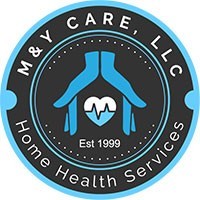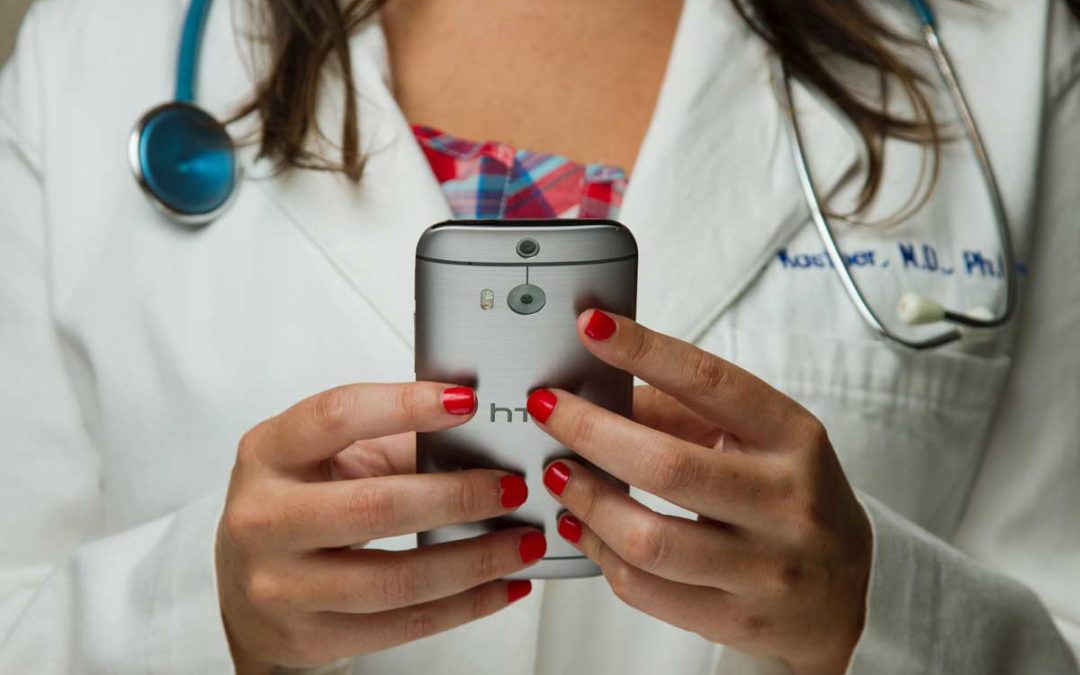
by M | Jun 29, 2020 | News |
As the coronavirus pandemic forced healthcare systems and providers to find new ways to deliver care, regulatory and reimbursement barriers lifted. Suddenly, telehealth became the darling of the healthcare delivery toolbox.
With new potential unleashed, a question looms about where the next form of disruption in virtual care will occur. Primary care seems poised as an ideal candidate.
As the ATA2020 Virtual Conference and Expo winds down its week-long event today, Northwell Health will present its novel model to home-based primary care (HBPC) that employs telehealth as one component of an initiative to provide medical care to frail individuals, helping them remain in their homes longer.
While hospitals, health systems, and provider groups explore other approaches to telehealth, the commercial sector, including MDLIVE, also has its eye on primary care. Along with creating more efficiencies, convenience, and hopefully lowering costs, these initiatives may help address a looming shortage in primary care physicians (PCPs), projected by the American Association of Medical Colleges to be between 21,000 and 55,200 by 2032.
Prior to COVID-19, urgent care had previously comprised the principal use case for telehealth visits with consumers. When the public health crisis hit, primary care providers (PCPs) and specialists began using this form of connecting with patients in record numbers. A FAIR Health measure of telehealth claims indicated a 4,347% increase in March from the privately insured sector alone.
Yet even before coronavirus crossed onto U.S. shores, MDLIVE, which offers virtual healthcare services to more than 40 million members nationwide, had already pegged primary care as a prime opportunity for growth. In January, the company announced a Virtual Primary Care Platform that Cigna is making available to 12.5 million of its members to conduct virtual annual wellness.
The platform is positioned to do much more, however, with an opportunity for consumers to use the service to develop an ongoing relationship with a virtual PCP. As the next step in this initiative, Cynthia Zelis, MD, MBA, joined the company this month as its chief medical officer. The board certified family physician previously helmed telehealth initiatives for University Hospitals in Cleveland, where she served as vice president of ambulatory operations and telehealth. She was the strategic and operational lead for 50+ ambulatory health centers and telehealth across the $4 billion dollar health system, which uses MDLIVE’s telehealth platform.
Her career trajectory may reflect a greater trend of what’s happening in the discipline of family medicine, as practitioners become more comfortable with embracing virtual care.
“I’m a daughter of a family physician, a wife of a family physician, and a family physician myself,” Zelis says. “I have always believed in the voice of the patient, as well as the voice of the provider, and that has motivated me to try to push and make an impact, even beyond the bricks and mortar of my original practice.”
Telehealth, she says, enables her to “provide that compassionate care that I’m able to give at the bedside and in [a] bricks and mortar [practice], but in an innovative and new way. I do believe virtual primary care is the next frontier to really make an impact.”
Zelis began her medical career in a traditional way, operating an independent practice. “The ability to impact the patient one-to-one in my practice was so empowering,” she continues. “Then I moved to a health system that took care of 1.3 million patients, and we had exponential growth of our virtual urgent care on-demand platform. It was powerful to see that impact. Now, as a physician executive with MDLIVE, [I have] the ability to impact 43+ million lives. That’s when real healthcare transformation can occur.”
While she no longer sees patients in person, “it is core to who I am to still be practicing,” says Zelis, To continue that line of work, she has become a credentialed MDLIVE primary care provider and plans to see patients virtually. “Continuing to practice ties me to my passion of taking care of patients and advancing health care,” she says, “and also [helps me support] my peers to understand how we can continue to make things better.”
Virtual care also offers an opportunity to improve patient care, she says, by enhancing the ability to be proactive. Coupling telehealth with remote patient monitoring will become a standard approach in the future, she predicts.
She provides an example to illustrate her point. “In my brick and mortar practice, a patient would come in for a blood pressure check with a long list of her blood pressures over the last three months,” But time was wasted, Zelis says, because eight weeks prior to the appointment the numbers had started to rise.
“Imagine that we’re monitoring [her] with virtual primary care … and I’m able to make an impact earlier, without the need for her to come to the office,” she says. The next step beyond that, she says, will be the ability “to use remote monitoring to predict future illness, as well as having a greater control on chronic illness, which we know is really one of the higher costs of healthcare.” The capability to deliver this type of care, Zelis says, is where the greatest opportunities lie to treat patients in the future.
“Virtual primary care is the next evolution of care,” says Zelis.
Although there is suddenly great momentum for telehealth, these changes will not happen overnight, she says. While many barriers have been lifted due to the pandemic, permanent changes to payment models and licensure are needed for this form of healthcare delivery to work long-term, she says.
To support these endeavors, Zelis is participating as one of nearly two dozen members on the Taskforce on Telehealth Policy. The taskforce has formed to help influence policy and develop long-term recommendations to maximize the benefits of telehealth services, while maintaining high standards for patient safety and program integrity, according to a news release.
The group, which holds its first meeting on June 29, is a joint initiative by the National Committee for Quality Assurance, the Alliance for Connected Care, and the American Telemedicine Association (ATA).
It includes representatives from a broad spectrum of plans, providers, consumer advocates, and health quality experts from the public, private and non-profit sectors. Zelis says the initiative is so important, that she will be serving alongside MDLIVE competitors Amwell, and Teledoc Health, as the industry comes together to find the best path forward.
“At the end of the day, we’re trying to continue to motivate and transform healthcare through telehealth,” Zelis says.
The task force is seeking input via a list of questions available online, and inviting members of the public to submit comments through July 8. At the close of the public comment period there will be a live town hall meeting to gain additional input.
“We urge all telehealth stakeholders to share their insights.” said ATA CEO Ann Mond Johnson in a news release.
By Mandy Roth | June 26, 2020
Source: Healthleaders Media
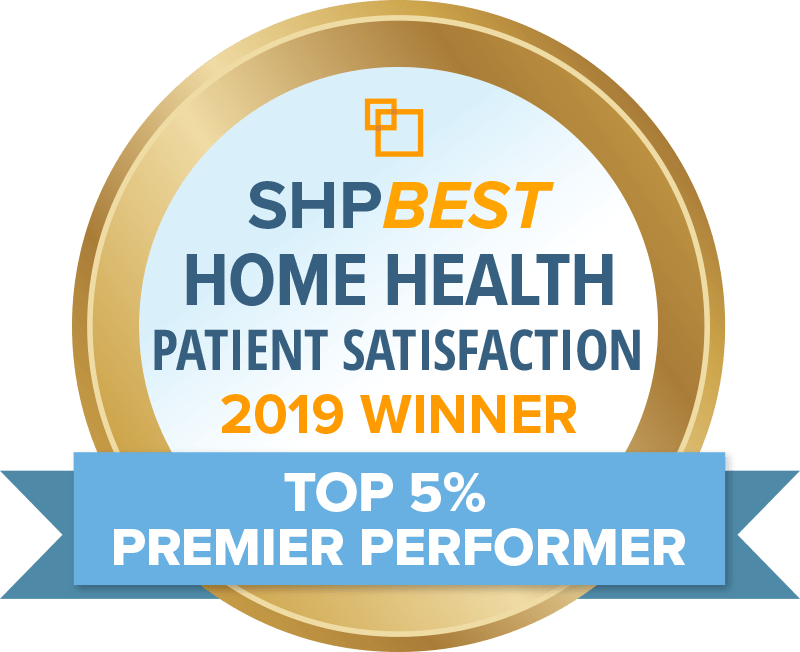
by M | Jun 27, 2020 | Blog, News |
M&Y Care has earned the 2019 SHPBestTM “Premier Performer” Patient Satisfaction Award
M&Y Care has been recognized by Strategic Healthcare Programs (SHP) as a “Premier Performer” for achieving an overall patient satisfaction score that ranked in the top 5% of all eligible SHP clients for the 2019 calendar year.
The annual SHPBest™ award program was created to acknowledge home health agencies that consistently provide high quality service to their patients. The 2019 award recipients were determined by reviewing and ranking the overall satisfaction score for more than 3,000 home health providers. With the largest HHCAHPS benchmark in the nation, SHP is in a unique position to identify and recognize organizations that have made patient satisfaction a priority and have been rewarded for their efforts with high marks on the HHCAHPS survey.
“SHP is proud to present the SHPBest awards to our top-performing customers. We commend these organizations for their continuous focus on delivering the highest quality of care to their patients”, said Rob Paulsson, President of SHP.
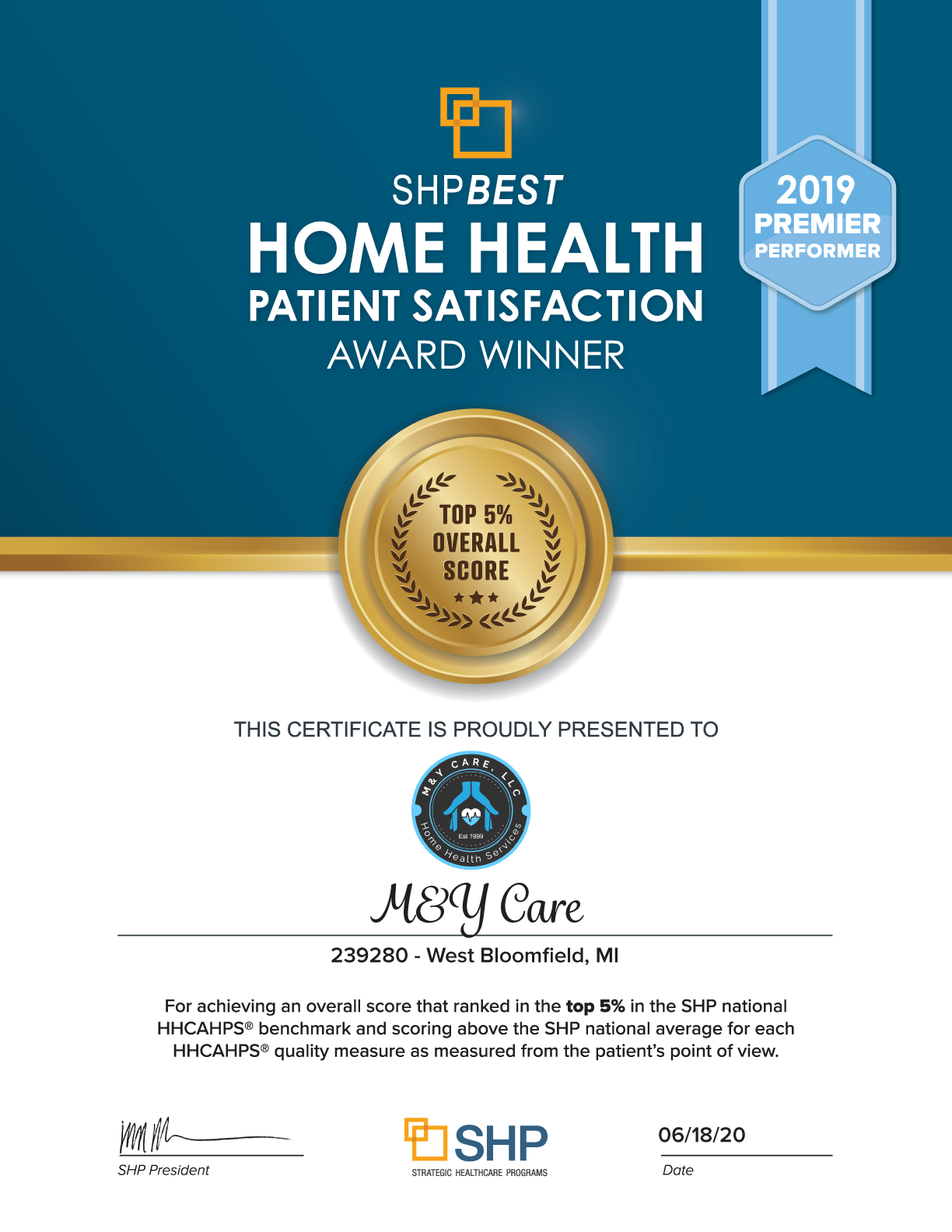

by M | Jun 26, 2020 | News |
After seven days as an inpatient for complications related to heart problems, Glenn Shanoski was initially hesitant when doctors suggested in early April that he could cut his hospital stay short and recover at home — with high-tech 24-hour monitoring and daily visits from medical teams.
But Shanoski, a 52-year-old electrician in Salem, Massachusetts, decided to give it a try. He’d felt increasingly lonely in a hospital where the COVID pandemic meant no visitors. Also, Boston’s Tufts Medical Center wanted to free up beds for a possible surge of the coronavirus.
With a push from COVID-19, such “hospital-at-home” programs and other remote technologies — from online visits with doctors to virtual physical therapy to home oxygen monitoring — have been rapidly rolled out and, often, embraced.
As remote visits quickly ramped up, Medicare and many private insurers, which previously had limited telehealth coverage, temporarily relaxed payment rules, allowing what has been an organic experiment to proceed.
“This is a once-in-a-lifetime thing,” said Preeti Raghavan, associate professor of physical medicine and rehabilitation and neurology at Johns Hopkins University School of Medicine. “It usually takes a long time — 17 years — for an idea to become accepted and deployed and reimbursed in medical practice.”
Physical therapists traded some hands-on care for video-game-like rehabilitation programs patients can do on home computer screens. And hospitals like Tufts, where Shanoski was a patient, sped up preexisting plans for hospital-at-home initiatives. Doctors and patients were often enthusiastic about the results.
“It’s a great program,” said Shanoski, now fully recovered after 11 days of receiving this care. At home, he could talk with his fiancée “and walk around and be with my dogs.”
But what will remain of these innovations in the post-COVID era is now the million-dollar question. There is a need to assess what is gained — or lost — when a service is delivered remotely. Another variable is whether insurers, which currently reimburse virtual visits at the same rate as if they were in person, will continue to do so. If not, what is a proper amount?
It remains to be seen what types of novel remote care will persist from this born-of-necessity experiment.
Said Glenn Melnick, a health care economist at the University of Southern California who studies hospital systems: “Pieces of it will, but we have to figure out which ones.”
Hospital At Home
Long established in parts of Australia, England, Italy and Spain, such remote programs for hospital care have not caught on here, in large part because U.S. hospitals make money by filling beds.
Hospital-at-home initiatives are offered to stable patients with common diagnoses — like heart failure, pneumonia and kidney infections — who need hospital services that can now be delivered and managed at a distance.
Patients’ homes are temporarily equipped with the necessities, including monitors and communication equipment as well as backup internet and power sources. Care is overseen by health professionals in remote “command centers.”
Medically Home, the private company providing the service for Tufts, sent its own nurses, paramedics and other employees to handle Shanoski’s daily medical care — such as blood tests or consultations via camera with doctors. They inserted an IV and made sure it was working properly during their visits, which often totaled three a day. Even when Medically Home employees were not there, devices monitored Shanoski’s blood pressure and oxygen levels.
For patients transferred from the hospital, like Shanoski, Tufts pays Medically Home a portion of what the hospital receives in payment. For transfers from an emergency room, Medically Home is paid directly by insurers with which it has contracts.
Before the pandemic, at least 20 U.S. health systems had some form of hospital-at-home setup, said Bruce Leff, a professor at Johns Hopkins University School of Medicine who has studied such programs. He said that, for the right patients, they’re just as safe as in-hospital care and can cost 20% to 30% less.
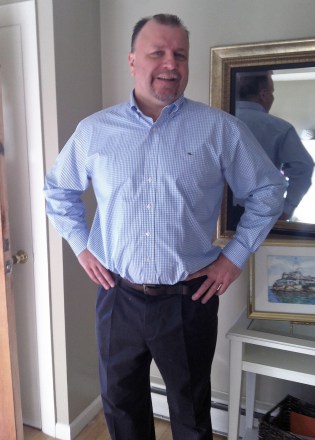
Glenn Shanoski, a 52-year-old electrician, spent 11 days with hospital-level care at home —– offered by Tufts Medical Center in Boston. Tufts provides daily visits from medical teams to closely monitor patients in their homes. (Courtesy of Glenn Shanoski)
Tele-Rehab?
When the coronavirus shut down elective procedures, many physical therapy offices had to close, too. But a number of patients who had recently had surgery or injuries were at a crucial point in recovery.
Therapists scrambled to set up video capability, while their trade association called insurers and regulators to convince them that remote physical therapy should be covered.
At the end of April, the Centers for Medicare & Medicaid Services added remote physical, speech and occupational therapy to the list of medical services it would cover during the pandemic. Just as it had done for other services, the agency said payment would be the same as for an in-person visit.
Though some patient care cannot be done virtually, such as hands-on manipulation of tight muscles, the doctors discovered many advantages: “When you see them in their home, you can see exactly their situation. Rugs lying around on the floor. What hazards are in the environment, what support systems they have,” said Raghavan, the rehabilitation physician at Johns Hopkins. “We can understand their context.”
Using video links, therapists can assess how a patient moves or walks, for example, or demonstrate home exercises. There are also specially designed video-game programs — similar to Nintendo Wii — that utilize motion sensors to help rehabilitation patients improve balance or specific skills.
“Tele-rehab was very much in the research phase and wasn’t deployed on a wide scale,” Raghavan said. Her department now does 9 out of 10 visits remotely, up from zero before March.
Pneumonia Monitoring
Even before the coronavirus emergency, some patients with mild pneumonia were treated as outpatients.
Now, with hospitals busy with COVID-19 cases and patients eager to minimize unneeded exposure, more physicians are considering this option and for sicker patients. The key is using a small device called a pulse oximeter, which clips onto the end of a finger and measures heart rate, while also estimating the proportion of oxygen in the blood. Costing at most a few hundred dollars, and long common in doctors’ offices, clinics and emergency rooms, the tiny machine can be sent home with patients or purchased online.
“We do it on a case-by-case basis,” said Dr. Gary LeRoy, president of the American Academy of Family Physicians. It’s a good option for relatively healthy patients but is not appropriate for those with underlying conditions that could lead them to deteriorate rapidly, such as heart or lung disease or diabetes, he said.
A pulse oximeter reading of 95% to 100% is considered normal. Generally, LeRoy tells patients to call his office if their readings fall below 90%, or if they have symptoms like fever, chills, confusion, increasing cough or fatigue and their levels are in the 91-to-94 range. That could signal a deterioration that requires further assessment and possibly hospitalization.
“Having a personal physician involved in the process is critically important because you need to know the nuances” of the patient’s history, he said.
What It All Looks Like In The Future
Virtual therapy requires patients or their caregivers to accept more responsibility for maintaining the treatment regimen, and also for activities like bathing and taking medicines. In return, patients get the convenience of being at home.
But the biggest wild card in whether current innovations persist may be how generously insurers decide to cover them. If insurers decide to reimburse telehealth at far less than an in-person visit, that “will have a huge impact on continued use,” said Mike Seel, vice president of the consulting firm Freed Associates in California. A related issue is whether insurers will allow patients’ primary caregivers to deliver treatment remotely or require outsourcing to a distant telehealth service, which might leave patients feeling less satisfied.
The industry’s lobbying group, America’s Health Insurance Plans, said the ongoing crisis has shown that telehealth works. But it offered no specifics on future reimbursement, other than encouraging insurers to “closely collaborate” with local care providers.
Whether virtual therapy is cost-effective “remains to be seen,” said USC’s Melnick. And it depends on perspective: It may be cheaper for a hospital to do a virtual physical therapy session, but the patient might not see any savings if insurance doesn’t reduce the out-of-pocket cost.
By Julie Appleby | June 23, 2020
Source: KAISER HEALTH NEWS

by M | Jun 24, 2020 | Blog, News |
The infection began with a dry cough that Michael Novielli couldn’t shake.
He soon developed fatigue, aches and a low fever.
As a 71-year-old with underlying health conditions, living on Long Island near the American epicenter of the COVID-19 outbreak, Novielli wasn’t taking any chances. So as his symptoms worsened, he went to the hospital, where he was diagnosed with COVID-19.
“I had never felt this sick my whole life,” he said.
Novielli spent four days in the hospital before he was sent back home. “I was going to wait it out,” he said. “I thought I could get rid of it at home.”
As a precaution, Novielli’s VA providers placed him on a telehealth program to monitor his symptoms at home. Once his recovery took a turn for the worse, Novielli says the VA telehealth program saved his life.
“The Best Move I Ever Made”
Michael Novielli served as a U.S. Marine during the late 1960s. He developed chronic lymphocytic leukemia after exposure to Agent Orange in Vietnam. Later in life, he was also diagnosed with diabetes.
Novielli’s care team at the VA Medical Center in Northport, New York, first suggested Remote Patient Monitoring – Home Telehealth (RPM-HT) about five years ago. They gave Novielli a blood pressure monitor that he could use at home to keep track of his health.
“It was the best move I ever made,” said Novielli. “For me, my blood pressure is very important, and using telehealth, they are able to monitor that from home.”
After being hospitalized with COVID-19, Novielli was happy to use RPM-HT to track his recovery once he returned home on April 3. Through the COVID-19 RPM-HT program, Novielli began sharing his temperature, oxygen levels, and heart rate every day with the VA telehealth team at the Northport VAMC.
On April 22, more than two weeks after Novielli was discharged from the hospital, Marjorie Rogers, a registered nurse with 14 years’ experience with VA, noticed something unusual in Novielli’s symptoms. Although his temperature and oxygen levels were normal, Novielli’s heart rate was elevated.
Rogers called Novielli immediately. “She said, ‘Your heart rate is up. Something’s definitely wrong. Go to emergency right away,’” Novielli said.
When Novielli arrived back at the hospital, doctors found that COVID-19 had caused fluid to build up in his lungs. Novielli had developed pneumonia.
This time, Novielli was in the hospital for almost two weeks. He was on oxygen and antibiotics, felt weak and tired, and lost 40 pounds. But after 13 days, he said, “The monster had left me.”
“Marjorie saved my life,” said Novielli. “If I wasn’t on the telehealth, I would have stayed home with the pneumonia, and who knows what would have happened.”
Using Telehealth To Stop the Spread
For VA providers like Marjorie Rogers, RPM-HT has been an important tool in fighting the spread of COVID-19 at the Northport VA.
“Because it’s a new disease, there is so much we don’t understand about it and that we’re learning,” Rogers said. “Through telehealth, we are keeping our Veterans safe from exposure. They’re not going into the VA facilities if they don’t have to, since we’re able to monitor them in their homes.”
Alisa Tribley, a registered nurse who is the Northport telehealth coordinator, said that telehealth has grown to meet the needs of Veterans with COVID-19. She said that at the peak of the local outbreak, over 140 Veterans were enrolled on Northport’s RPM-HT COVID-19 protocol.
“With RPM-HT, we are monitoring mild symptoms that can be managed at home and recognizing if Veterans reach the point where they should go for in-person care,” Tribley said.
Making a difference
Some of the Veterans in Northport are using telehealth for the first time. Tribley said that while it is an adjustment for some, many are appreciative of the added care.
“Veterans are very grateful that they have a health care team member watching over them and being in touch with them on a daily basis,” said Tribley. “It’s very rewarding knowing that you’re making that difference for them.”
Rogers said that she felt honored when Novielli called her to thank her for intervening on his behalf.
“I really felt that his story was a testament to all the VA telehealth coordinators nationwide,” she said. “To hear him say that really gave me a sense of pride that we’re contributing to Veterans health — that we’re helping them stay alive.”
Novielli says he is thankful for all the care he received from the VA telehealth team and at the hospital. When he finally overcame the pneumonia, the health care workers on his floor applauded as he left the hospital. “It’s nice to have people like that take care of you — people who really care,” he said.
Novielli is still being monitored by RPM-HT – but his cough is finally gone, he is off oxygen, and he’s starting to go on walks with his physical therapist. He said that once a COVID-19 vaccine is developed, he wants to visit Europe and go on a cruise with his fiancé.
Novielli said he hopes that his experience encourages his fellow Veterans to take COVID-19 seriously and take advantage of VA telehealth resources.
“Going through something like this makes you feel for other people who weren’t as fortunate,” Novielli said. “I hope it encourages people to take more care, and to have a better outlook on life.”
Taken from Official Blog of the U.S. Department of Veterans Affairs
Posted on Monday, June 22, 2020 9:30 am

by M | Jun 22, 2020 | News |
Last month, I had the immense honor of testifying before the U.S. Senate Special Committee on Aging to take part in an important discussion on caring for America’s aging population in the midst of the current public health crisis.
The COVID-19 pandemic has upended American life in nearly every possible way. And while it’s difficult to find silver linings amidst the chaos it has caused, the novel coronavirus has offered us this: a frank lesson in where our health care system needs improvement – and also what we’re doing right.
Perhaps the most alarming lesson we’ve learned is that our country wasn’t prepared to meet our unprecedented preventive resource needs or the care needs of individuals suffering from COVID-19. We simply lacked the testing capacity, hospital and emergency room resources, and personal protective equipment to handle this pandemic. But, fortunately, we’ve also witnessed the strength of our individual health care providers – across all sectors – and their commitment to providing safe and exceptional care, despite tremendous obstacles.
As a member of the nation’s home health care community – which serves more than 3.5 million Medicare beneficiaries each year – I have never seen the system so strained, but I also have never felt prouder of the skilled, compassionate, and courageous people I work with day in and day out.
Across the nation, our more than 1 million home health and home care professionals have stepped up, in spite of all the challenges and risks, to help medically fragile seniors get home from hospitals and nursing homes – and in some cases, to help people avoid leaving their homes in the first place. We’ve kept older, vulnerable patients safely out of crowded care settings, helping to slow coronavirus transmissions. In fact, an estimated 41 percent of home health agencies have reported caring for COVID-19 positive patients in the home – effectively managing symptoms, providing treatments, and freeing up inpatient beds for those who need them most.
Even in the midst of this frightening virus, there has been opportunity to get excited about the future. For example, home health providers, like many others, have been able to step up and make a difference thanks to the spirit of innovation. Expansion of telehealth and virtual visits has been crucial to providing care, allowing providers to remotely assess patients and monitor vital signs like oxygen levels and other symptoms of COVID-19. Home health agencies have made it work – despite the fact that there is currently no direct reimbursement for telehealth in the Medicare program. Even before the pandemic, we knew that telehealth could improve the quality of home care, and COVID-19 has proven it is worth the investment for the future.
Our community has been proud to serve on the front lines during this coronavirus pandemic, but we have not been immune to its effects. The future – and our ability to remain strong for future waves of COVID-19 and the growing Medicare population – depend on the support from leaders in the administration and our champions in the Congress.
The home health community needs the support of Congress because, while the CARES Act was certainly a tremendous first step, further support is still needed. For example, in spite of the central importance of telehealth use within home health agencies, there is no direct reimbursement for these services. While flexibilities were provided under emergency waivers to ensure patients could maintain access to care during the COVID-19 crisis, these flexibilities will be needed over the long term. Home health agencies also continue to have added expenses related to personal protective equipment, infection control, employee testing, and added compensation of front-line caregivers working in the highest risk situations.
When making future policy decisions, lawmakers must recognize that Medicare reimbursement is estimated to have fallen off by 20 percent, and the recovery may be slowed by new outbreaks and setbacks. We also saw patient admission volume decrease significantly because of reductions in elective surgeries – like joint replacements that often require post-surgical home health. Further, some patients have refused care for fear of contracting COVID-19.
As the nation adjusts to its new COVID-19 reality, home health care providers are prepared to continue doing what we can to keep Americans safe. And we hope we can count on the administration and Congress to help by ensuring ongoing support for home health providers by addressing the gaps in telehealth reimbursement and continuing to make funds available to our sector through the Provider Relief Fund in the CARES Act. Doing so will help us to maintain the delivery of quality home-based care to our patients and their families.
The coronavirus emergency shines a light on much that we’re doing right as a nation to care for the most vulnerable patients. Support from lawmakers in these challenging times will help us to succeed.
By Steven Landers, Opinion Contributor — 06/19/20 07:00 PM EDT
Source: The Hill

